 |
 |
 |
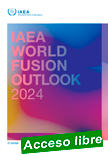 |
IAEA World Fusion Outlook 2024
IAEA/PAT/005 ¦ English ¦ 73 pages ¦ Date published: 2024
The IAEA’s World Fusion Outlook aims to be the global reference for authoritative information and updates on fusion energy — a potentially unlimited, low carbon source of clean energy, which can contribute to decarbonization and diversification of energy generation in the long term. The IAEA has been promoting fusion energy research and development for over 60 years, and it continues to strongly support research and development and future deployment by bringing the fusion community together to create solutions for both scientific and technological challenges.
|
This second issue of the publication outlines achievements in fusion energy, features fusion plant concepts under development and their timelines, policy frameworks, and trends in both public and private investment. It also covers research output metrics and offers regional and sectoral outlooks.
|
 |
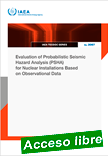 |
Evaluation of Probabilistic Seismic Hazard Analysis (PSHA) for Nuclear Installations Based on Observational Data
IAEA-TECDOC-2067 ¦ English ¦ 86 pages ¦ Date published: 2024
The objective of this TECDOC is to support the guidance given in SSG-9 (Rev. 1), by providing the state-of-the-practice and detailed technical elements related to the evaluation of probabilistic seismic hazard assessment (PSHA) on the basis of observational data. This publication defines the methodology and provides practical guidance for evaluating the elementary and integral steps of PSHA, with the help of examples from case studies and describes the type of observational data that may be used in the evaluation.
|
This publication also discusses the ways of using the evaluation results to check the center, body and range of the epistemic uncertainties to encourage PSHA developers to update or reconsider unrealistic assumptions or combination of unrealistic branches in the logic tree. The technical information and practical guidance provided here will be valuable to nuclear power plant operators, regulatory bodies, vendors, technical support organizations and researchers working in the field of seismic hazard assessment for nuclear installations.
|
 |
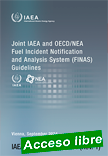 |
Joint IAEA and OECD/NEA Fuel Incident Notification and Analysis System (FINAS) Guidelines
IAEA Services Series No. 14 (Rev. 1) ¦ English ¦ IAEA-SVS-14 ¦ 56 pages ¦ Date published: 2024
The Fuel Incident Notification and Analysis System (FINAS) is a powerful tool to exchange operating experience from events occurred at nuclear fuel cycle facilities (NFCFs) of the participating Member States, with an aim to prevent the occurrence of similar events at other NFCFs.
|
This publication provides information on the use of FINAS, including its reporting process and usage. It provides users with the necessary background and information to develop and submit event reports to the system. This publication is intended for operating organizations, technical support organizations and regulatory bodies of operating nuclear fuel cycle facilities, specifically the National Coordinators and Generic Users of FINAS.
|
 |
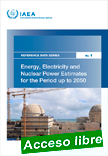 |
Energy, Electricity and Nuclear Power Estimates for the Period up to 2050
Reference Data Series No. 1 ¦ English ¦ IAEA-RDS-1/44 ¦ 137 pages ¦ Date published: 2024
The 44th edition of Reference Data Series No. 1 (RDS-1) contains estimates of energy, electricity, and nuclear power trends up to the year 2050. The publication is organized into world and regional subsections with low and high case projections for nuclear capacity and starts with a summary of the status of nuclear power in IAEA Member States as of the end of 2023 based on the latest statistical data collected by the IAEA’s Power Reactor Information System (PRIS).
|
Relative to a global nuclear operational capacity of 372 GW(e) at the end of 2023, the low case projects an increase of about 40% to 514 GW(e) by 2050. In the high case, world nuclear capacity is projected to increase to 2.5 times the current capacity, reaching 950 GW(e) by 2050. Enabling factors would be necessary to reach the high case, including supportive national policies and strategies, more favourable financing frameworks, investment in grids and work force development. The intended audience includes policy makers, energy analysts and industry.
|
 |
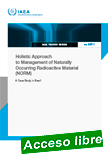 |
Holistic Approach to Management of Naturally Occurring Radioactive Material (NORM)
English ¦ IAEA-TECDOC-2071 ¦ 60 pages ¦ Date published: 2024
This publication introduces the Holistic Approach to Naturally Occurring Radioactive Material (NORM) Management as being developed in the scope of the Environet NORM Project. This publication also presents an analysis of how this framework can be systematically applied to scope the way in which a given country can deal with management of NORM residues within a circular economy transition.
|
This publication is intended for policy makers, governmental organizations, industries related to NORM, regulators, consultants in the area of NORM and members of academia.
|
 |
 |
Effective Work Management for Sustaining Operational Excellence at Nuclear Power Plants
IAEA-TECDOC-2068 ¦ English ¦ 99 pages ¦ Date published: 2024
The objective of this publication is to identify challenges and opportunities related to the work management process (WMP) that nuclear power plant (NPP) owner/ operating organizations are facing, to share best practices for addressing those challenges and to discuss considerations for effective WMP. It aims to assist leaders and managers in those organizations to improve effectiveness of the WMP and to sustain operational excellence.
|
.
|
 |
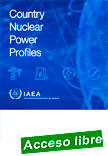 |
Country Nuclear Power Profiles
IAEA-CNPP/2024 ¦ English ¦ Date published: 2024
The Country Nuclear Power Profiles (CNPP) provide background information on the status and development of nuclear power programmes of Member States. The CNPP's main objectives are to consolidate information on the nuclear power infrastructure and developments in participating countries, and serve as a resource in effective planning, decision making and implementation of nuclear power programmes that lead to the safe and economical operations of nuclear power plants.
|
The CNPP summarizes organizational and industrial aspects of nuclear power programmes and provides information about the relevant legislative, regulatory and international framework in each country. The descriptive and statistical overview of the overall energy and electricity situation in each country and its nuclear power framework are intended to serve as an integrated source of key background information about nuclear power programmes in the world. Statistical data about nuclear plant operations, energy and electricity use are drawn from national contributions and the IAEA's Power Reactor Information System (PRIS). The CNPP website is updated on an annual basis, with a complementary publication providing a high-level overview of programmes in participating Member States. Currently, it contains historical country information for 50 countries, including countries currently operating nuclear power plants, and countries with past or planned nuclear power programmes. The CNPP reports are updated based on information voluntarily provided by participating IAEA Member States. Each of the profiles in this publication is self-standing and contains information officially provided by the respective national authorities.
|
 |
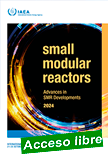 |
Small Modular Reactors: Advances in SMR Developments 2024
IAEA/PAT/008 ¦ English ¦ 48 pages ¦ 8 figures ¦ Date published: 2024
This publication aims to provide Member States with a concise overview of the latest developments regarding SMR technology worldwide. It explores SMRs under development, their potential growth trajectory, and the lifecycle of SMR development from concept to decommissioning.
|
It also examines the unique global role the IAEA plays in supporting the establishment of sustainable nuclear power programmes and in catalysing technology development and deployment in Member States including through efforts such as the SMR Platform and the Nuclear Harmonization and Standardization Initiative (NHSI). Most data presented in this publication come from the 2024 update to the ARIS database. Publications on the status of SMR technology developments have been published in 2011, 2012, 2014, 2016, 2018, 2022 and 2024.
|
 |
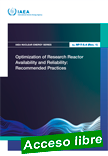 |
Optimization of Research Reactor Availability and Reliability: Recommended Practices
IAEA Nuclear Energy Series No. NP-T-5.4 (Rev.1) ¦ English ¦ STI/PUB/2080 ¦ 70 pages ¦ Date published: 2024
This publication addresses the main challenges related to the sustainable operation and effective utilization of a research reactor. Clarity on the vision, mission, and purpose of a research reactor is directly related to understanding the optimization of its availability and reliability. The practices of interest discussed are generally within the domain of the research reactor operating organization and involves operating activities and management systems.
|
The scope includes the attributes of different management systems, related practices and the activities that have proven their value through demonstrated performance excellence in several Member States. It provides a high-level summary of the key activities supporting availability and reliability, provides examples of good practices of operating research reactors in Member States, and references to additional IAEA publications, where applicable, for more comprehensive details. This publication is intended for research reactor designers, operators, regulators, and other stakeholders as guidance for improving operation and maintenance practices of research reactors.
|
 |
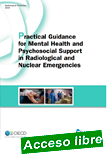 |
Practical Guidance for Mental Health and Psychosocial Support in Radiological and Nuclear Emergencies
OECD NEA No. 7665 ¦ English ¦ 104 pages ¦ Date published: 2024
This publication provides a comprehensive guide to integrating MHPSS in radiological protection strategies during a nuclear or radiological (N/R) emergency. It operationalises the World Health Organization’s 2020 framework for MHPSS in such emergencies, covering all phases: preparedness, response, and recovery. The guide is aimed at official managers, decision-makers, and specialists involved in N/R emergency planning, response and recovery (early, intermediate, and long-term), as well as MHPSS specialists in large-scale disasters and all-hazards emergency settings.
|
It emphasises the importance of understanding the basics of radiation exposure, emergency management, and public health concepts. The guide supports an all-hazards approach and also addresses unique risk factors of N/R emergencies, such as the perception of risks associated with radiation exposures. It includes a summary table of actions and detailed action sheets for various themes, e.g. integrating MHPSS into needs assessments, public communication strategies, services for host communities, clinical referrals, and mental health monitoring. The guide highlights that, although lessons have been learnt from past N/R emergencies, there is a need for further research on effectively integrating MHPSS into radiological protection decisions.
|
 |
| |
|
|

|
|
|
| |
|
|
| |
| |
|
|
| |
| |
|
|
| |
| |
|
|
|
| |
| |
